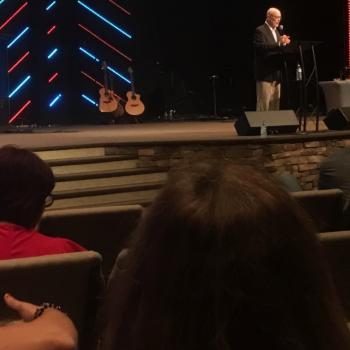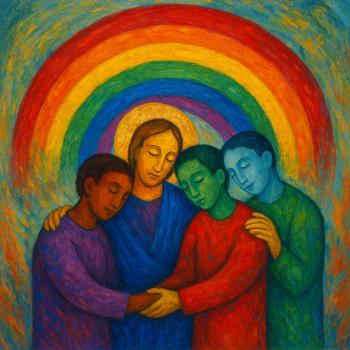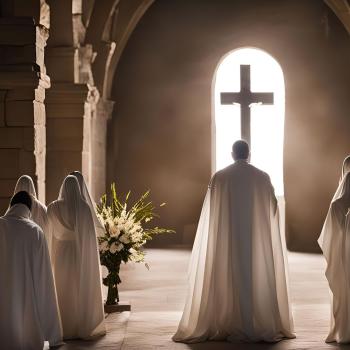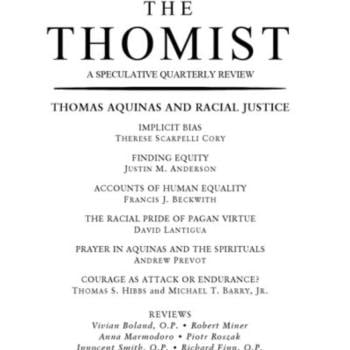Now Featured in the Patheos Book Club
Sacred America, Sacred World
Fulfilling Our Mission in Service to All
By Stephen Dinan
Creating a Culture of Peace
Blessed are the peacemakers, for they shall be called the children of God.
—Matthew 5:9
In this chapter, we will begin to explore some of the more challenging areas for public policy and show how we can approach these issues in novel ways that build from a sacred worldview and integrate the values of both left and right. The next chapters will particularly focus on issues of peace and security and how left and right can work together to create a safe America and a peaceful world. We'll go from templating a culture of peace locally to looking at how the United States can create stability in the Middle East.
Everywhere we turn, it seems, we are surrounded by violence. War, murder, crime, child abuse, domestic abuse, and violent sports: they are all woven into the fabric of our world—and especially American culture.
We have just emerged from the bloodiest century in recorded history only to start our new millennium with conflagrations around the globe and the "war without end" on terrorism, including the latest horrors of ISIS.
While it is easy to be dismayed by violence elsewhere, in many ways America is a leading perpetrator. We are the biggest manufacturer and seller of arms, selling 30 percent of all the weapons in the world.1 Our homicide rates have been the worst in Western developed countries for sixty years,2 and our incarceration rates are the highest in the world, at 716 per 100,000 as of October 2013.3 And our entertainment offers a continual stream of violence for an eager global audience.
What will it take to shift our culture away from one founded on violence to one in which our bedrock principles are based on peace? That question has provoked many great thinkers, activists, and change agents. We'll explore one such pathway in this chapter.
It begins with the recognition that if our task is to create a shift to a culture of peace on a national and global scale, we need to be able to demonstrate how that is possible on a local scale. Through a powerful demonstration project that harnesses best practices, pioneering programs, and social innovations, we can show that a shift from a culture of violence to a culture of peace is possible. Once such a demonstration project is successful on a local level, the teachings, infrastructure, practices, and collaborations that work can be brought into new areas. In many ways, this represents the same approach as most startup components: build a proof of concept, get it working well, then scale it and replicate it in new markets. Working with a smaller size initially allows us to test approaches more easily with fewer resources.
Creating a local demonstration project for shifting to a culture of peace is part of the idea behind the Summer of Peace, which we began at The Shift Network with a yearly program of three-month virtual online conferences that bring many of the most significant peacebuilders and organizations into synergistic relationship with each other. It is now the largest online peace event each year, featuring hundreds of the top pioneers, all of which ends up in a free World Peace Library. As our Director of Peace Philip Hellmich likes to say, this cross-sector approach is leading to a new narrative of peace from inner to international. By bridging many different perspectives, from mediators to military experts and scientists to spiritual teachers, we are beginning to see the patterns that connect them all into a holistic approach to peace and security.
This online resource library with the world's top peacebuilders can then inform a local-level demonstration project. By weaving together best practices from dozens of nonprofit groups, marshaling the best science on practices of peace, enrolling citizens in participatory processes at a neighborhood level, and encouraging personal peace pledges through events and web media, we believe that it is possible to demonstrate a dramatic long-term reduction in the baseline of crime and violence in a single city, which can then be studied and replicated.
This goal will be challenging, and it will require massive participation as well as synchronization between efforts in education, criminal justice, policing, and social services. It will require spiritual practices, communication training, and efforts to heal community trauma. And it will require a shift toward restorative justice, community policing, and innovative programs to work with violent offenders. In short, it will require a collaboration between both engaged citizens and government officials, working from the level of law, courts, police, and criminal justice to neighborhood interventions with troubled youth and gangs.




